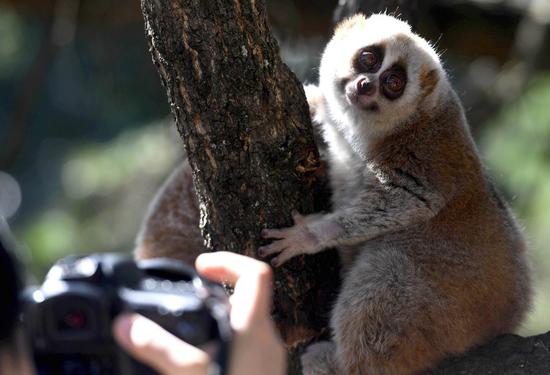Chinese researchers cast more light on globally threatened primates
Chinese experts have recently revealed the evolutionary adaptation and demographic history of pygmy lorises, according to the Kunming Institute of Zoology under the Chinese Academy of Sciences.
Lorises are a group of globally threatened primates that exhibit many unusual physiological and behavioral features, including a low metabolic rate, slow movement, and hibernation. Although they occupy a key node in primate phylogeny, people's knowledge of this group remains quite limited.
Researchers from the institute assembled a chromosome-level genome sequence of the pygmy loris and resequenced whole genomes from 50 pygmy lorises and six Bengal slow lorises, according to a paper published in the journal Proceedings of the National Academy of Sciences.
They found that many gene families involved in detoxification have been specifically expanded in the pygmy loris, including the GSTA gene family, with many newly derived copies functioning specifically in the liver, said the paper.
The results also showed that many genes display evolutionary convergence between the pygmy loris and the koala, including PITRM1. Significant decreases in PITRM1 enzymatic activity in these two species may have contributed to their characteristic low rate of metabolism.
The population genomics analysis revealed that these two extant loris species -- the pygmy loris and the Bengal slow loris -- which coexist in the same habitat, have exhibited an inverse relationship in terms of their demography over the past one million years, implying strong interspecies competition after speciation.
These findings serve to deepen people's understanding of the adaptive evolution of pygmy lorises, and may also provide useful information for future studies of human disorders related to abnormal metabolism, skeletal muscle development, and circadian rhythms, said the researchers.

